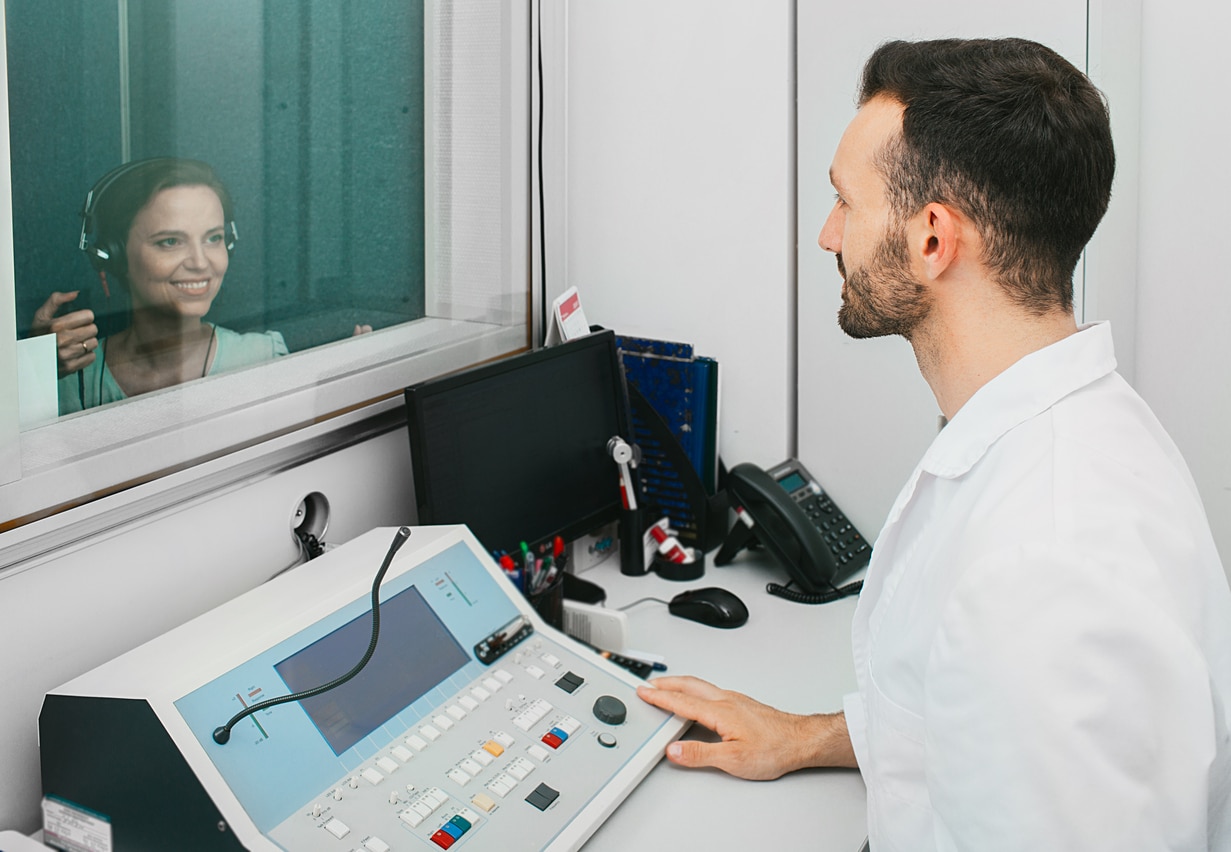If you’re between the ages of 18 and 65 and you’re exhibiting symptoms of hearing loss, are exposed to loud noises regularly or have a family history of hearing loss, we at Valley Audiology recommend scheduling a hearing test with an expert audiologist. Comprehensive hearing exams actually entail multiple tests; in fact, you may undergo several of the types of tests listed below.
Pure Tone Testing

Pure tone testing, also known as pure tone audiometry, is a test that uses air conduction to measure your ability to hear sounds at various pitches and volumes. For this test, you will sit in a soundproof room and wear a set of headphones. A series of tones will be played through the headphones, and you’ll indicate each time you hear one.
Speech Testing
Speech testing tests your speech reception threshold (SRT), which refers to the faintest speech you can hear at least half the time. It is administered similar to pure tone testing, except instead of tones, words will be played. Your audiologist may administer this test in silence or play background noise.
Bone Conduction Testing
Bone conduction testing is another type of pure tone test, but it measures how well your inner ear receives sound from bone. For this test, you will wear a conductor behind your ear that sends tiny vibrations through the bone directly to the inner ear. The results of this test will be compared to your pure tone testing results to determine your type and degree of hearing loss.
Tympanometry
Tympanometry measures how your eardrum moves in response to air pressure. It is used to determine if there is any earwax, fluid buildup, eardrum perforations or tumors causing hearing problems.
Acoustic Reflex Testing
Acoustic reflex testing measures the involuntary muscle contraction the middle ear makes in response to sounds. This test helps determine the location of your hearing problem and your type of hearing loss.
Auditory Brainstem Response (ABR)
Auditory brainstem response tests how your brain responds to sound stimuli. During this test, you’ll wear electrodes on your head as well as a set of headphones that play various sounds. ABR is often used for newborns but can also detect if you have sensorineural hearing loss.
Otoacoustic Emissions (OAEs)
Otoacoustic emissions are the tiny sounds generated by the vibrations of the hair cells within the cochlea. This test uses a small probe with a speaker and microphone on the end to stimulate the cochlea and measure its responses.
For more information or to schedule a hearing test, call Valley Audiology today.